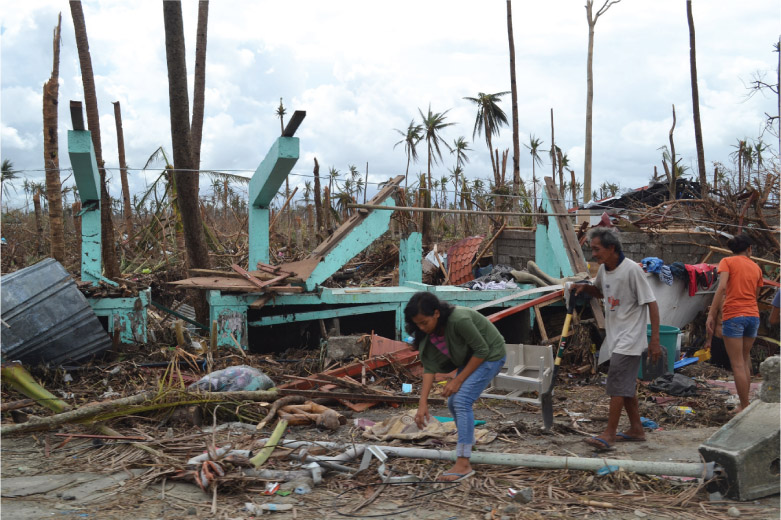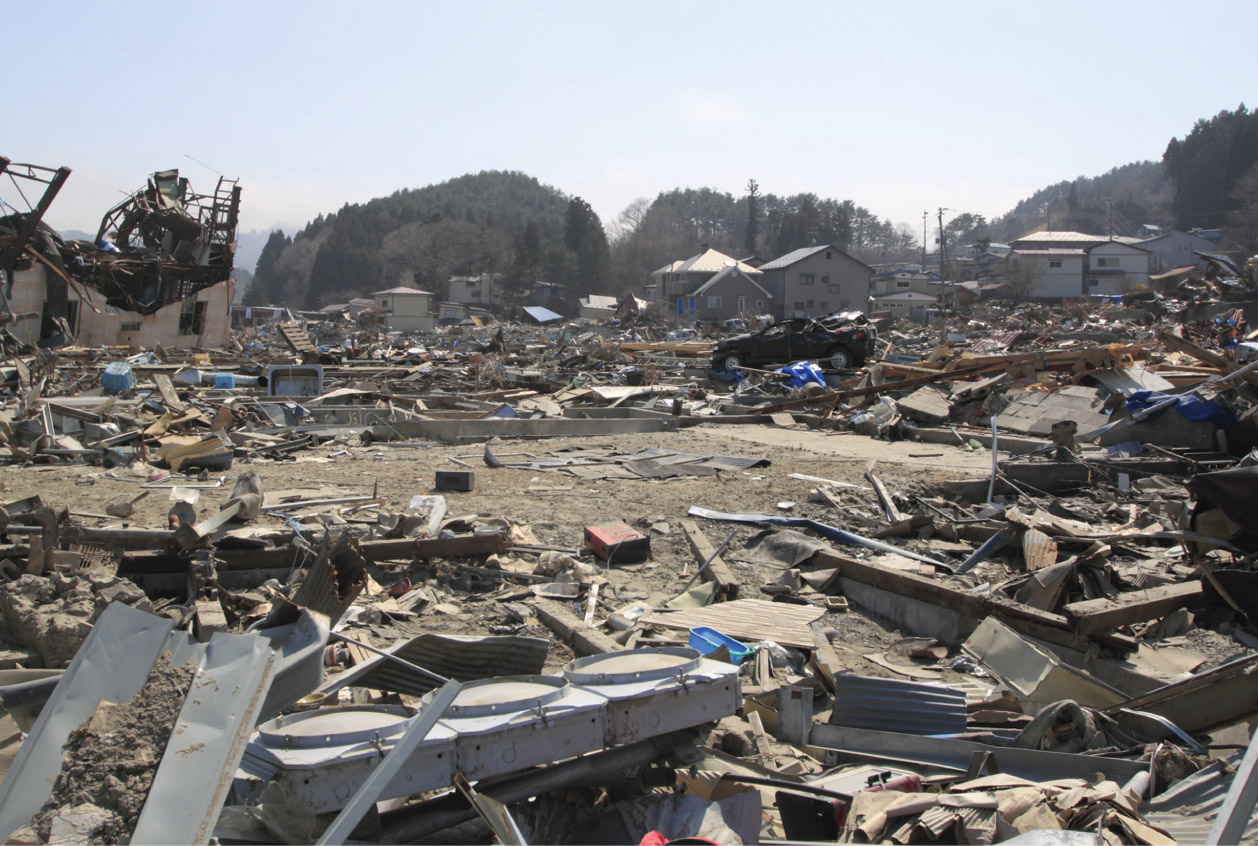17.5 The impact of global events and natural disasters
Unfortunately, many geographic events and disasters have terrible consequences for the people of the country in terms of loss of life and destruction of their homes and towns. In addition, some natural disasters also affect the economic activity of other countries in the region and across the world. Australia is part of the Asia-Pacific region and can be adversely affected by a natural disaster in another country in the region.
Natural disasters and their economic impacts on Australia
The human cost of such events should always be at the forefront of discussions, but what occurs in one country can also influence the Australian economy in a number of direct and indirect ways.
Typhoon in the Philippines
The Philippines is vulnerable to natural disasters such as earthquakes and volcanic eruptions and is hit by about 20 typhoons every year. Typhoons usually form over the ocean and are large spiralling, slow-moving storms which cause heavy rains and strong winds of up to 240 kilometres an hour.
In 2012 a typhoon known locally as ‘Pablo’ was a category five storm and the world’s deadliest typhoon. It killed more than 1800 people, destroyed an estimated 177 000 houses and affected more than 6.2 million people. The damage bill was estimated to have been over US$1 billion.

The impact of the typhoon is also economic. The Philippines still has relatively high levels of economic growth (an economic growth rate of around 7% since September 2012, making it the fastest growing economy in Southeast Asia and only behind China in Asia). In the long term there has not been an impact from the typhoon on Australia, but the Australian government provided aid and support in the immediate aftermath of the disaster. If the Philippine economy is still growing it allows the population to move on in an economic sense and provides employment and infrastructure for those affected.
Japanese earthquake and tsunami
In early 2011 Japan was hit by a huge 8.9 magnitude earthquake and a tsunami followed. The earthquake and tsunami had a terrible human impact on the country with up to 28 000 lives lost and more than 500 000 people displaced or homeless. In addition, it had a severe impact on the Japanese economy. The impact included:
- Key ports were damaged and closed down.
- Transport infrastructure was crippled along the north-east of the country.
- Airports were closed.
- Large companies such as Sony closed operations.
- The car manufacturers Toyota, Suzuki, Nissan and Honda all suspended production.
- The nuclear power industry also suffered as the ageing Fukushima atomic power plant shut down due to an explosion after the tsunami. Not only was there a loss of human life and potential threat from radiation but there were also shortages in electricity supply.
- Radiation leaked, for a short time, into water supplies and was found in local milk and vegetables.
- The cost was estimated to be between $100 and $235 billion and the plant would take five years to rebuild. This is worse than the $125 billion cost estimate for Hurricane Katrina in the USA.

This had a terrible impact on the Japanese economy and it also affected Australia. Japan is one of Australia’s largest trading partners so the impact of production shut-downs, particularly in the car industry, adversely affected Australia. A reduction in demand for coal, steel, gas and beef occurred. However, with the need to rebuild infrastructure there was an increased demand for Australian steel and coal for energy needs.